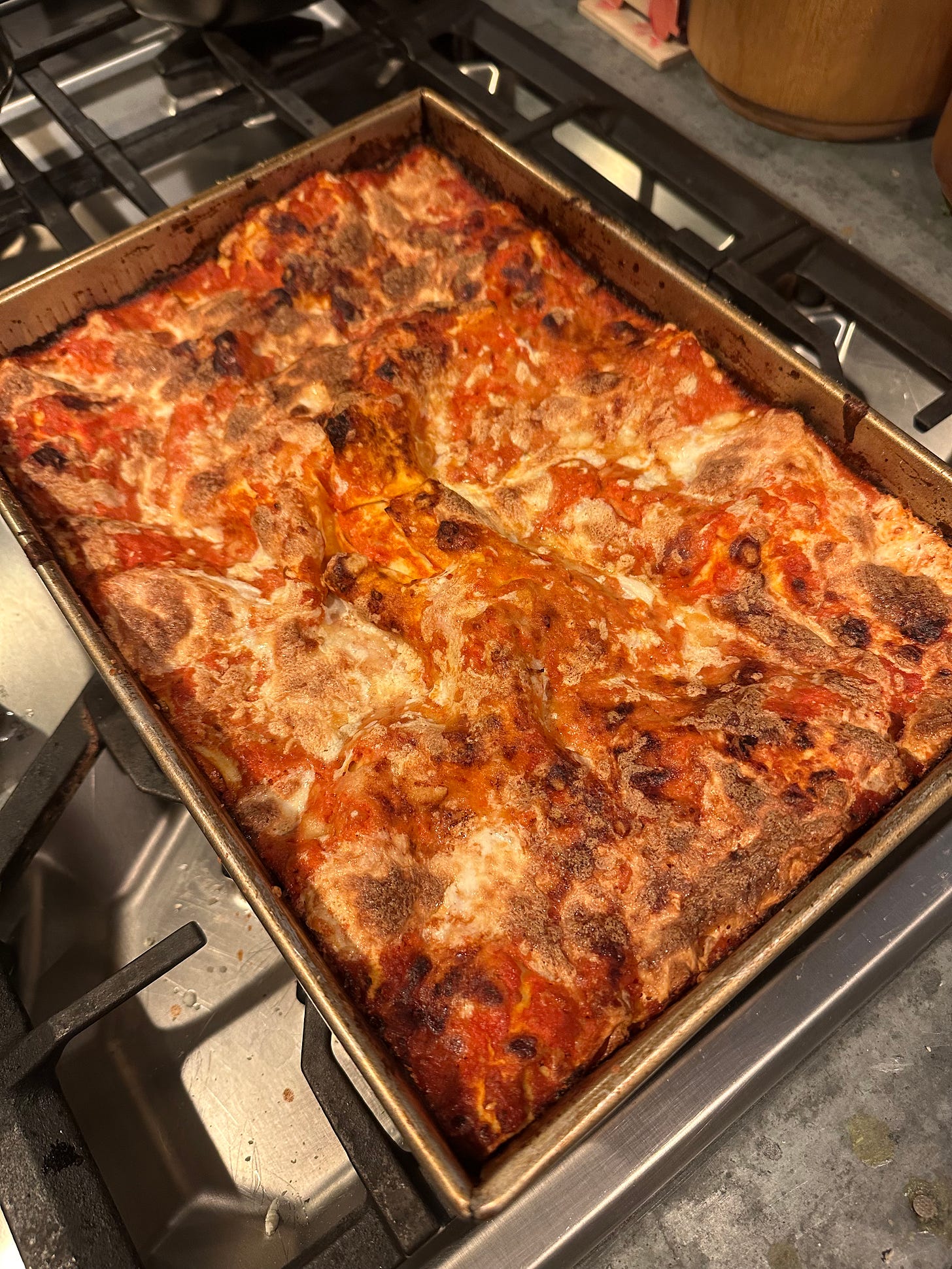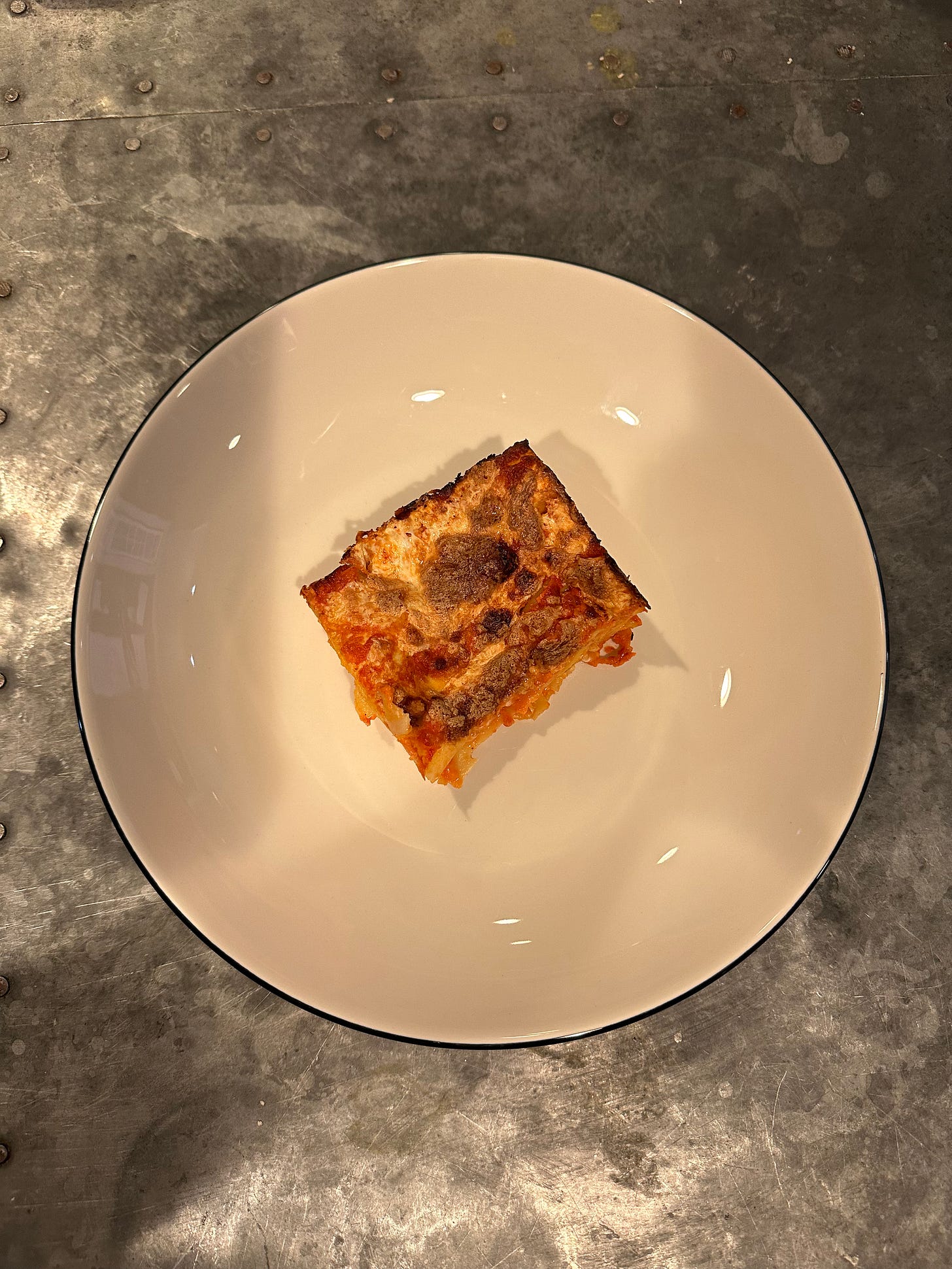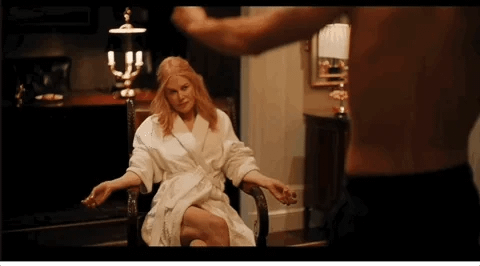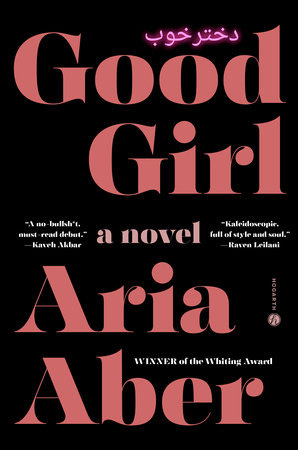On Making Lasagna at the End of the World
Blessed are the Lasagna Makers, for they will inherit the Earth.
Last night I made lasagna for the first time in my life.
After forty years of not making lasagna, I had begun to believe that not making lasagna was an indelible part of me. Not a flaw, exactly, but a personality trait. The longer I went without making a lasagna, the more I solidified a Unified Theory of Lasagna Makers.
The Unified Theory of Lasagna Makers
The theory is simple. There are two kinds of people in this world: people who make lasagna, and people who don’t.
Lasagna Makers are the backbone of society. They feed the grieving, the sick, the overwhelmed and exhausted; the new mothers, the people recovering from surgery or a catastrophic job loss. I saw myself as the other kind of person – the kind who benefits from a lasagna. I always feel overwhelmed and exhausted, and lasagna seems complicated, I told myself. It has so many layers! So many steps!
I was, more or less, content to live out the rest of my days without ever making a lasagna. I do give back to society, just. . . not in ways that involve layering noodles, sauce, and cheese, over and over and over again. As I write this I’m reminded that perhaps what I actually dreaded about lasagna making was repetition. There is something about doing the same tasks over and over and over again that makes me feel a little insane. This is also why I don’t knit.
The Making of the Lasagna
On New Year’s Day my son Milo asked if we could make lasagna together. He wasn’t trying to topple my Unified Theory of Lasagna Makers. He just craved lasagna, and since he mostly subsists on hummus, chicken nuggets and YouTube Shorts, I thought making a lasagna together would be good for both of us. It didn’t have to signify anything about me or my capabilities or where I fit into the fabric of society. It could just be a lasagna.
I asked my friend July, who is very much a Lasagna Maker, for the best recipe and Milo and I began the process of making our first lasagna. While we sliced garlic and grated cheese and simmered tomato sauce, we talked about how we might survive at the end of the world. (This is top of mind for him because he’s watching an anime show called Dr. Stone, which as far as I can tell is about a group of people rebuilding civilization from scratch.)
“If it’s zombies,” he said, “we’d have to build little stick houses out in the barnyard. Because the fences are high enough to keep out the zombies, and we’d have eggs to eat from the chickens.”
I agreed, and wondered aloud how we might make a lasagna at the end of the world. This is a game I play in my head all the time that isn’t really a game. How could I make a cup of tea at the end of the world? What about bread? Butter? Birthday cake?
We talked it all out: how we’d have to plant the garlic in the winter, and breed the goats in order to make cheese. And then, in early spring, we’d plant the wheat and the tomatoes and the basil, and make the cheese, and dry the garlic bulbs, and then later in the summer we’d pick the tomatoes and can them, and harvest the wheat and grind it into flour, so that by maybe September we’d have everything we needed to make the lasagna.
“So yeah,” I said. “I guess it would take us almost a year.”
“But you have to remember,” said Milo, as if it were the most obvious thing in the world, “we’d have a community.”
I always forget that part.
A Word About Doomsday Prepping
A few years ago, I got in trouble on the website formerly known as Twitter. Hank Green tweeted about doomsday prepping as an individualist fantasy. “People like to imagine their success in an apocalypse because they don’t believe in other people,” he wrote. “They buy the lie that they can win the end of the world because it lets them feel strong while caving into fear.”
He went on to distinguish between doomsday prepping and emergency kits, because if you’re prepared for an emergency, you free up first responders to focus on the most vulnerable populations.
Maybe because I felt a little bit attacked by the first part, I replied to the tweet. “I guess I don’t totally understand the difference,” I wrote. “I feel like we all owe it to ourselves and one another to be prepared for emergencies but also to plan as best we can for a catastrophic event – whether that’s due to climate change or war or something else.”
I still stand by this statement, for what it’s worth. I don’t think there is anything radical about it. Maybe someday I will write my treatise on why the left needs to reclaim the doomsday prepper movement, and maybe it’ll be here in my newsletter. But at the time, I thought that comment stood on its own: unobjectionable, rational and considerate.
A stranger with the username Loafing Cactus did not agree.
“Love when people are like, ‘I enjoy imaging your death, but cottage core,’ and that’s supposed to make us okay with it,” they replied. “You imagine a world without me or anyone like me. You chose to share your violent fantasies with us, dear. You could have written that in a diary.”
. . . what?
“I don’t have violent fantasies,” I thought. “I have anxiety. They’re not the same thing!” When I tried to explain myself, they had blocked me.
I thought about Loafing Cactus when Milo reminded me about the existence of community. It’s true that there is something hyper-independent about my obsession with apocalyptic survival. And, while there is nothing pleasant about imagining the end of the world, I guess in a way it is a fantasy: the idea that I, or anyone, could survive it without community.
The End of The Unified Theory of Lasagna Makers
Milo and I did the repetitive thing I had been dreading: layered the noodles with the sauce and the cheese. It surprised me by being fun, quick, and satisfying. “Huh,” I thought to myself, as I put the lasagna in the oven. “That wasn’t even that bad.”
(Don’t worry; this didn’t make me think any less of Lasagna Makers.)
After dinner, I kept thinking about Milo, and the wisdom and innocence of his comment: we’d have a community. In his mind, in this hypothetical scenario, even with zombies gnashing at the gates, we wouldn’t be alone in the barnyard. Someone else could grow the tomatoes, or the garlic, or the wheat. We’d share the work of growing everything and we’d share the making of the lasagna and we’d share the eating of the lasagna.
Even though I don’t think Milo had intended to topple my Unified Theory of Lasagna Makers, he did. I no longer believe that humanity is divided between Lasagna Makers and everyone else. I think there are Lasagna Makers and the people who simply haven’t made a lasagna yet, and we all take turns holding up everybody else, don’t we?
I’m really scared about the future, you guys. Even though it likely won’t look like the dystopian novel in my mind – at least not anytime soon – my heart aches when I think about the potential damage the incoming political administration might do to the most vulnerable among us. I am not trying to be naively optimistic about this: it’s going to be bad, and people are gong to be hurt and people are going to die. No amount of lasagna can fix this.
But Milo reminded me of something important: we can’t forget community. We only have each other, but that’s a whole lot. You don’t have to run for office or start a movement or organize a protest or make a lasagna to help people. You can just show up in small ways for the people you care about, and maybe that’s how we’ll make it through this.
Some Delights for 2025
Harris Dickinson’s dance to “Father Figure” in Babygirl, and also Babygirl in general. Go see it!
Speaking of good girls, Aria Aber’s debut novel comes out in a few weeks, and I was lucky enough to read an advance copy. I can’t stop thinking about this book. At a sentence level, it stuns; it took me into Berlin’s early aughts club scene in a way that terrified and enthralled me. I loved the narrator so much I wanted to reach through the pages and pull her out of some of the situations she found herself in, but of course I couldn’t - the heart of the book lies in Nilab’s finding her own place in the world. Compelling, complex, gritty, and gorgeous. I loved it.
Other books I’ve loved recently:
Rejection by Tony Tulathimutte
The Ministry of Time by Kalianne Bradley
The Sarah Book by Scott McClanahan
The copywriting in the Vermont Country Store catalog
If you’re trying to wean yourself off Amazon this year, may I suggest:
Bookshop.org to buy physical books
Libro.fm instead of Audible
StoryGraph instead of Goodreads
Grove.co instead of Amazon Subscribe & Save
The new (real!) job I’m starting next week, at one of the companies listed above! More to come.






Your writing is deeeeelicccciiioouuusssss
What a wise young soul Milo is. Also, Jenn Segal has all kinds of fantastic recipes and is the sweetest person.